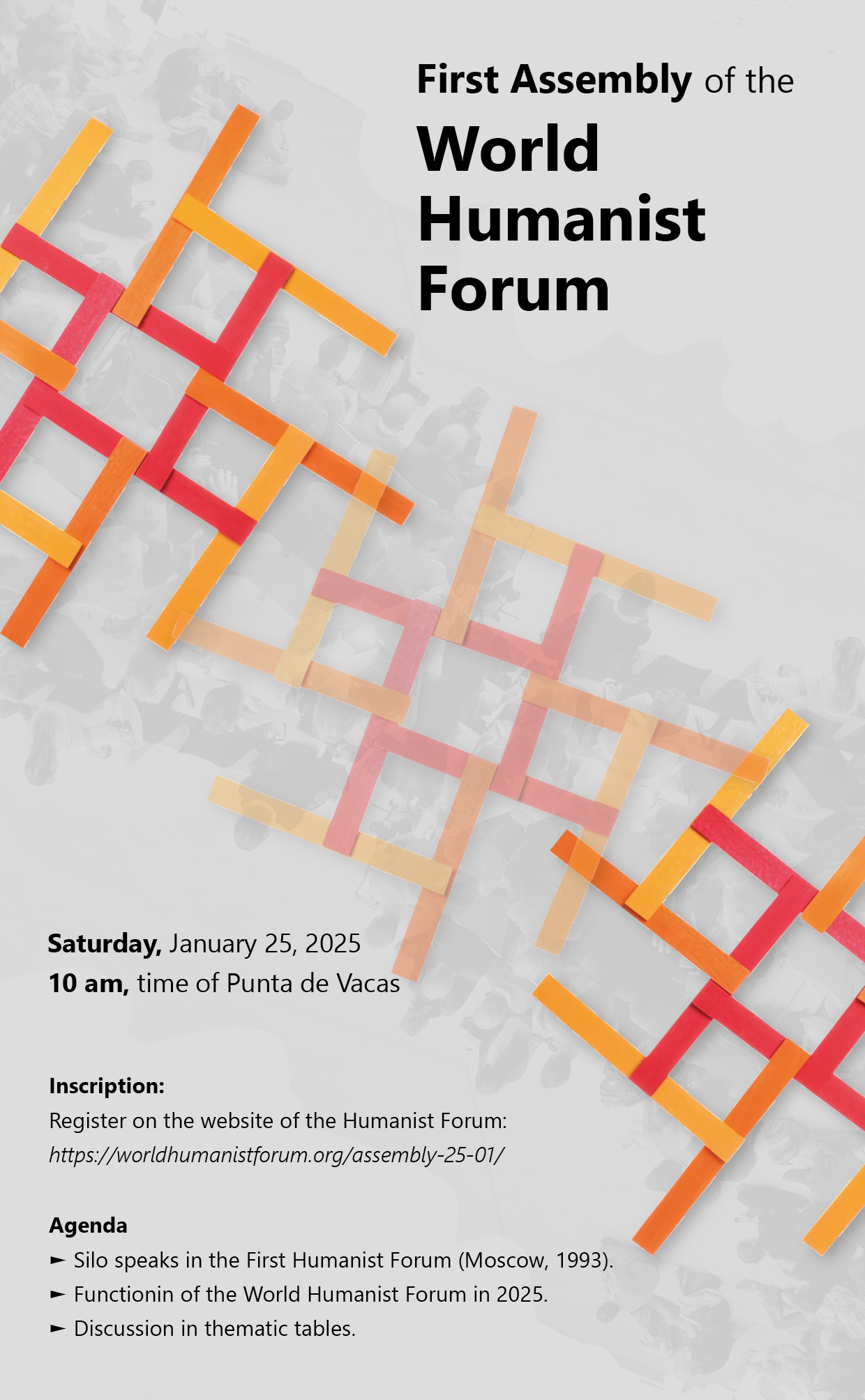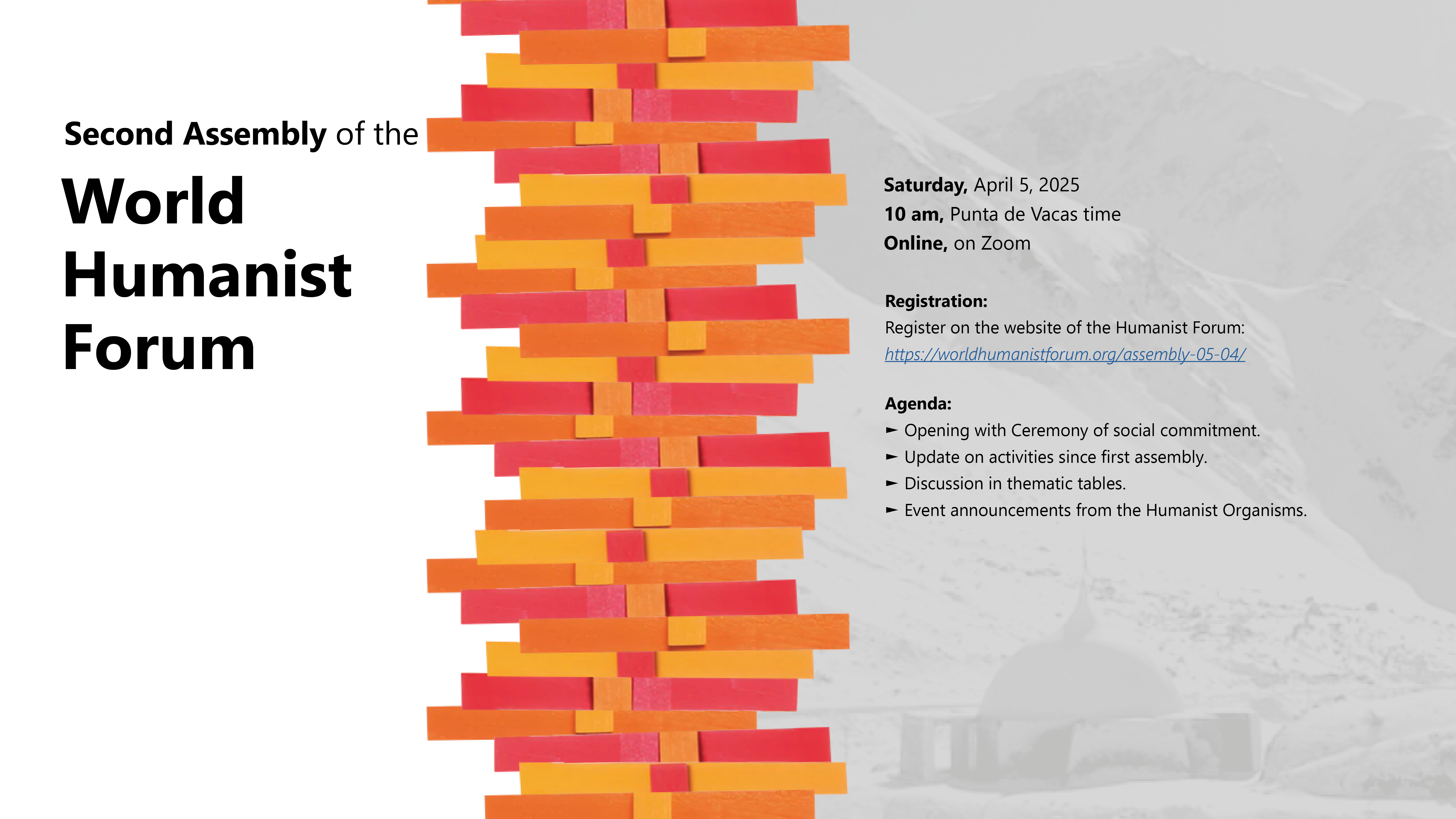Health
Thematic table of the World Humanist Forum
A comprehensive perspective on health
Health is a fact that has concerned people and communities of all times and places.
In the recent past, after the Second World War, on April 7, 1948, the World Health Organization was created with the aim of building a better and healthier future for people around the world.
At that time, health began to be defined as the state of complete physical, psychological and social well-being, and not merely the absence of disease.
This was obviously an improvement over other, more limited conceptions, but as we will see, it is a vision and an application that needs to be reviewed, and that is what we intend to do in this presentation.
Currently, community healthcare is officially the responsibility of the healthcare systems that have developed around the world, but with a narrow and fragmented view of what is understood by health.
Reduced because it focuses its attention on thebiological aspectand secondarily in thepsychologicalneglecting spiritual, social, and environmental aspects.
Fragmentedbecause over the last century healthcare has become divided intospecialtiesand subspecialties that, while they have achieved a deeper understanding of the damage suffered by people, do not account for all the factors that determine health.
On the other hand, they propose an almost exclusively pharmacological therapyand/or surgical, not taking into account the universe of “unconventional” care strategies that have accompanied and served communities and civilizations throughout distant and recent history.
Finally, it is considered as amarket gooddetermined by financial interests rather than asocial goodand aUniversal Human Right.
This leads to healthcare focusing on existing damage, limiting access to care based on financial means. This hinders the possibility of thinking about health holistically and with a comprehensive and effective approach to health problems.
But to think of new solutions that surpass the current ones, we must make the effort to go beyond the limits of thinking, which, like invisible barriers, make us look for solutions where there are none left.
If we want to change the situation that determines the health status of populations, we will have to question the current perspective that leads us to believe we can indefinitely improve life and health by analytically separating people into increasingly smaller groups for treatment. This generates the emergence of more specialties that will define more pathologies and deepen our understanding of the damage, but it also leads us to provide increasingly partial and therefore insufficient answers.
Transcending the limits of thinking about health will be possible if we attempt an exercise that leads us to a structural way of thinking that, going beyond the analytical vision, shows us how all the parts are connected, forming a coherent whole that, through the life process, will always seek to perpetuate itself and grow, overcoming the instances that limit it.
Seen in this light, the history of human health is then the history of overcoming the conditions that limit lifespan and well-being.
Let us then analyze the elements that make up the structure and dynamics of the health process, describing its current limitations and proposing the steps to follow to overcome them.
For this, the first thing we need is to define what we mean when we talk about health.
Silo said in his book The Inner Landscape, “The key to what you do must lie in the essence of what you believe.”
Then it will be important to understand what we believe about life and health.
If we start by considering that people are bio-psycho-spiritual beings who are born and develop in a social world and in a natural environment, then we will define health as a situation of dynamic equilibrium in the biological, psychological, spiritual, social and environmental aspects and as a process that seeks increasing adaptation that leads to living more years in adequate health conditions.
And if healthy living is dynamic equilibrium, when the limits of equilibrium are transgressed, risk, illness, and death appear.
Therefore, to maintain health, one must operate within these limits, strengthening the mechanisms that allow us to return to balance when it is lost.
This leads us to define five areas and three moments of the health process.
The areas that need to be addressed in a comprehensive vision of health will be:
In thebiological, paying attention to proper nutrition, hydration, breathing, movement and rest.
In thepsychologicalestablishing harmonious relationships with oneself and with the community.
In thespiritualDeveloping the ability to create inner silence and finding meaning in existence.
In social terms, understanding that our own well-being is not separate from that of those around us and promotingsolidarity behaviorsthat allow the social fabric to be rebuilt without violence.
In environmental matters, promoting thecareful handlingof the environment, generating favorable conditions for the life of all and restoring the environment ofdeteriorationgenerated by indiscriminate exploitation. This environment begins in the home that protects us from immediate adverse environmental conditions.
The one described is a static view that allows us to list the areas where we need to work.
The process vision marks different stages that we go through and places us in relation to the situation we are in and based on it what should be done.
The first stage is health, characterized as a way of living in balance, without records of pain, suffering or meaninglessness and with a feeling of full vitality and strength to move forward in life.
Another stage, separated from the previous one by imprecise boundaries, is the stage of risk, where some manifestations appear that sometimes go unnoticed but are key to developing prevention actions, which will be more effective the earlier they are taken.
The third stage is thedisease.This gives more defined signs that show us a situation that clearly affects life.
But to reach the moment when the disease manifests itself, other moments were gone that, if they had been addressed, could have prevented the damage.
Finally, once the acute phase of the illness has been resolved, we need to address any lasting effects that may weaken the overall condition, and this is what we callrehabilitation
This means that a holistic view of the human being and their health leads us to suggest that there are no possibilities ofcomprehensive healthif fundamental issues such as the following are not resolved:
- the lifestyle and living conditions of people and populations;
- personal and social violence that arises in society when the human being is not the central value and is mistreated in his dignity;
- when the prevailing purpose is material accumulation, leading to a few having far more than they need and an increasing number of people lacking even the bare necessities; and
- If we do not take care of our common home, which is the planet, by preventing its degradation and global warming, starting with housing and the immediate environment, we will make this place uninhabitable.
Therefore, it is necessary to raise awareness of the global situation and to make a rapid change in the direction of life that people and communities are taking.
In summary, it is for the reasons stated above that we understand that in the area of health, the following will need to be developed:
1 onestructural viewthat integrates all areas that are determinants of health and alook of processthat includes all the stages that are gone through.
- andholistic approachrather than the prevalence of the fragmentation of the person according to specialties.
- thegood treatmentas an indicator of care with human quality rather than identifying technology as a synonym for quality of care.
- thehealth maintenance and improvementand preventionaccording to risks rather than the treatment of the established disease.
- the warm and humanized approach in thechildbirth careas the moment of the beginning of human life and incorporation into the community.
- theaccompanimentof people at the end of their life process as a fundamental part of the concern of the art and science of caring.
- The incorporation of knowledgeunconventionalof proven effectiveness in the training of healthcare personnel.
- the strengthening of thePrimary Care Strategyand theHealth educationfrom all communities.
- the promotion of training ofgeneral practitioners and family doctorsaccessible to the entire community.
In other words, a comprehensive and process-oriented approach dictates the need to address all these elements simultaneously, not making the disease the center of our attention, and prioritizing, in personal and community action, the development of ahealthy lifestyle.
Recent activities
January 2025
Participation in First Assembly of the WHF

April 2025
Participation at the 2nd Assembly

Documents
Books of Silo in Spanisch, French and English
